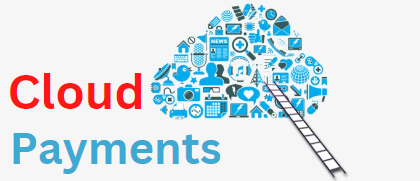Understanding the Basics of Cloud-Based Payment Systems
In today’s digital age, businesses are constantly seeking innovative solutions to streamline their operations and enhance customer experiences. One such solution that has gained significant traction is cloud-based payment systems. These systems offer a secure and efficient way to process payments, manage transactions, and store sensitive customer data. In this comprehensive guide, we will delve into the intricacies of cloud-based payment systems, exploring their advantages, working mechanisms, key components, security measures, integration with existing infrastructure, choosing the right provider, common challenges, and frequently asked questions.
Advantages of Cloud-Based Payment Systems
Cloud-based payment systems offer numerous advantages for businesses of all sizes. Firstly, they provide enhanced flexibility and scalability. With cloud-based systems, businesses can easily scale their payment processing capabilities to accommodate fluctuations in transaction volumes. This scalability ensures that businesses can handle peak periods without any disruptions or delays, ultimately improving customer satisfaction.
Secondly, cloud-based payment systems offer improved accessibility. Traditional payment systems often require businesses to invest in expensive hardware and software, limiting accessibility to a specific location. However, cloud-based systems can be accessed from anywhere with an internet connection, allowing businesses to process payments remotely and cater to a global customer base.
Furthermore, cloud-based payment systems offer cost savings. By eliminating the need for on-premises infrastructure and maintenance, businesses can significantly reduce their IT costs. Additionally, cloud-based systems typically operate on a pay-as-you-go model, allowing businesses to only pay for the resources they use. This cost-effective approach enables businesses to allocate their financial resources more efficiently.
How Cloud-Based Payment Systems Work
Cloud-based payment systems operate on a distributed network of servers that are hosted remotely. When a customer initiates a payment, the transaction data is securely transmitted to the cloud-based system. The system then processes the payment, verifies the transaction details, and communicates with the relevant financial institutions to authorize the payment.
Once the payment is authorized, the cloud-based system generates a receipt and updates the relevant records. This information is then securely stored in the cloud, ensuring that businesses have access to comprehensive transaction data for reporting and analysis purposes.
Key Components of Cloud-Based Payment Systems
Cloud-based payment systems consist of several key components that work together to facilitate seamless payment processing. These components include:
- Payment Gateway: The payment gateway acts as the intermediary between the customer, the business, and the financial institutions. It securely transmits the payment data, encrypts sensitive information, and facilitates the authorization process.
- Merchant Account: A merchant account is a type of bank account that allows businesses to accept and process payments. It is typically linked to the payment gateway and enables businesses to receive funds from customer transactions.
- Payment Processor: The payment processor is responsible for handling the technical aspects of payment processing. It ensures that the payment data is securely transmitted, verifies the transaction details, and communicates with the relevant financial institutions to authorize the payment.
- Data Storage: Cloud-based payment systems rely on secure data storage to store transaction records, customer information, and other relevant data. This data is encrypted and protected to ensure the privacy and security of sensitive information.
Security Measures in Cloud-Based Payment Systems
Security is a paramount concern when it comes to cloud-based payment systems. These systems employ various security measures to protect sensitive customer data and prevent unauthorized access. Some of the key security measures include:
- Encryption: Cloud-based payment systems use encryption techniques to encode sensitive data during transmission and storage. This ensures that even if the data is intercepted, it remains unreadable and unusable to unauthorized individuals.
- Tokenization: Tokenization is a process where sensitive data, such as credit card numbers, is replaced with unique tokens. These tokens are used for transaction processing, while the actual data is securely stored in a separate location. This minimizes the risk of data breaches and theft.
- Two-Factor Authentication: Two-factor authentication adds an extra layer of security by requiring users to provide two forms of identification before accessing the system. This can include a password, a fingerprint scan, or a one-time verification code sent to a mobile device.
- Regular Security Audits: Cloud-based payment system providers conduct regular security audits to identify and address any vulnerabilities or weaknesses in their systems. These audits help ensure that the system remains secure and compliant with industry standards.
Integration of Cloud-Based Payment Systems with Existing Infrastructure
Integrating a cloud-based payment system with existing infrastructure is a crucial step in ensuring a seamless payment processing experience. Businesses need to consider factors such as compatibility, data migration, and system integration when implementing a cloud-based payment system.
Compatibility refers to the ability of the cloud-based payment system to work with existing hardware and software. It is essential to assess whether the system can integrate with the existing point-of-sale (POS) systems, e-commerce platforms, and other payment processing tools.
Data migration involves transferring existing customer data, transaction records, and other relevant information to the cloud-based system. This process should be carefully planned and executed to ensure the integrity and security of the data.
System integration involves connecting the cloud-based payment system with other business systems, such as inventory management, customer relationship management (CRM), and accounting software. This integration enables businesses to streamline their operations and gain valuable insights from comprehensive data analysis.
Choosing the Right Cloud-Based Payment System Provider
Selecting the right cloud-based payment system provider is crucial for the success of any business. When choosing a provider, businesses should consider the following factors:
- Security: The provider should have robust security measures in place to protect sensitive customer data. They should comply with industry standards and regulations, such as the Payment Card Industry Data Security Standard (PCI DSS).
- Reliability: The provider should have a proven track record of reliability and uptime. Downtime can result in lost sales and damage to the business’s reputation, so it is essential to choose a provider with a reliable infrastructure.
- Scalability: The provider should offer scalable solutions that can accommodate the business’s growth and changing needs. This ensures that the payment system can handle increased transaction volumes without any disruptions.
- Integration: The provider should have the capability to integrate with existing infrastructure and business systems. This allows for a seamless transition and ensures that the payment system can work harmoniously with other tools and processes.
Common Challenges and Solutions in Implementing Cloud-Based Payment Systems
Implementing a cloud-based payment system can come with its fair share of challenges. However, with careful planning and the right strategies, these challenges can be overcome. Some common challenges and their solutions include:
- Data Migration: Transferring existing data to the cloud-based system can be a complex process. To overcome this challenge, businesses should conduct a thorough data audit, clean up and organize the data, and work closely with the provider to ensure a smooth migration.
- Training and Adoption: Introducing a new payment system requires training employees and ensuring their adoption. To address this challenge, businesses should provide comprehensive training sessions, offer ongoing support, and communicate the benefits of the new system to employees.
- Compliance and Regulations: Cloud-based payment systems must comply with various regulations, such as PCI DSS. To navigate this challenge, businesses should choose a provider that is compliant with industry standards and regularly updates their security measures to meet evolving regulations.
- System Integration: Integrating the cloud-based payment system with existing infrastructure can be complex. To overcome this challenge, businesses should work closely with the provider and consider using middleware or APIs to facilitate seamless integration.
Frequently Asked Questions about Cloud-Based Payment Systems
Q.1: What is a cloud-based payment system?
A cloud-based payment system is a digital solution that enables businesses to process payments, manage transactions, and store sensitive customer data securely. It operates on a distributed network of servers hosted remotely.
Q.2: How does a cloud-based payment system work?
When a customer initiates a payment, the transaction data is securely transmitted to the cloud-based system. The system processes the payment, verifies the transaction details, and communicates with the relevant financial institutions to authorize the payment. The system then generates a receipt and updates the relevant records.
Q.3: Are cloud-based payment systems secure?
Cloud-based payment systems employ various security measures, such as encryption, tokenization, and two-factor authentication, to protect sensitive customer data. It is crucial to choose a provider that complies with industry standards and regularly conducts security audits.
Q.4: Can cloud-based payment systems integrate with existing infrastructure?
Yes, cloud-based payment systems can integrate with existing infrastructure, such as point-of-sale systems, e-commerce platforms, and other payment processing tools. This integration enables businesses to streamline their operations and gain valuable insights from comprehensive data analysis.
Conclusion
Cloud-based payment systems offer businesses a secure, flexible, and cost-effective solution for processing payments and managing transactions. With their enhanced accessibility, scalability, and integration capabilities, these systems have become an integral part of modern business operations. By understanding the basics of cloud-based payment systems, businesses can make informed decisions, choose the right provider, and overcome implementation challenges. Embracing cloud-based payment systems can revolutionize payment processing, enhance customer experiences, and drive business growth in the digital era.











